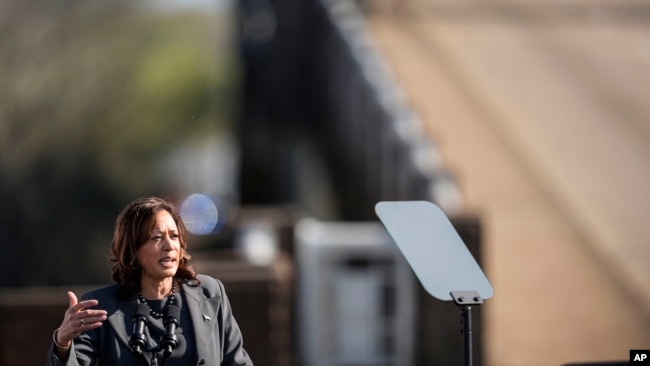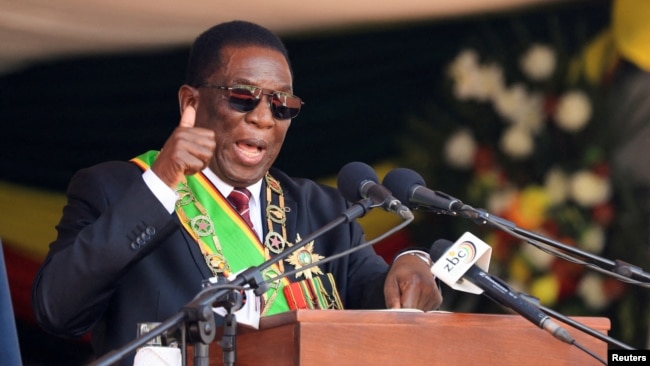NASA 캡슐이 달을 날아 달 궤도에 오르기 전 마지막 큰 걸음을 내디뎠어요
NASA Capsule Buzzes Moon, Last Big Step Before Lunar Orbit
페이지 정보
작성자 Associated Press 작성일 22-11-22 17:32 댓글 0본문

NASA TV의 이 화면은 2022년 11월 21일 월요일, 달에 가까워지고 있는 나사의 오리온 캡슐을 보여줍니다. 그 중심은 지구입니다. (NASA는 AP를 통해)
This screengrab from NASA TV shows NASA's Orion capsule, left, nearing the moon, right, Monday, Nov. 21, 2022. At center is Earth. (NASA via AP)
플로리다 주 케이프 커내버럴입니다.
Cape Canaveral, Florida —
미 항공우주국(NASA)의 오리온 캡슐이 월요일 달에 도착해 우주비행사들을 위해 실험용 인형들이 앉아 있는 기록적인 궤도를 향해 달 표면을 휙 돌면서 윙윙거렸습니다.
NASA's Orion capsule reached the moon Monday, whipping around the far side and buzzing the lunar surface on its way to a record-breaking orbit with test dummies sitting in for astronauts.
캡슐이 달을 방문한 것은 50년 전 NASA의 아폴로 계획 이후 처음이며 지난 수요일에 시작된 41억 달러 규모의 시험 비행의 거대한 이정표입니다.
It's the first time a capsule has visited the moon since NASA's Apollo program 50 years ago and represents a huge milestone in the $4.1 billion test flight that began last Wednesday.
저드 프릴링 비행 책임자에 따르면, 달과 우리의 옅은 푸른색 행성이 230,000마일(37만 킬로미터) 이상 떨어진 곳에서 촬영된 영상은 우주 관제 센터가 있는 휴스턴의 존슨 우주 센터에 근무자들을 "기디"하게 만들었습니다. 심지어 비행 관제사들도 "매우 놀랐다"고 말했습니다.
Video of the looming moon and our pale blue planet more than 230,000 miles (370,000 kilometers) in the distance left workers "giddy" at Houston's Johnson Space Center, home to Mission Control, according to flight director Judd Frieling. Even the flight controllers themselves were "absolutely astounded."
오리온의 프로그램 매니저 하워드 후는 "전면적으로 미소를 짓습니다."라고 말했습니다.
"Just smiles across the board," said Orion program manager Howard Hu.
승무원 캡슐과 유선으로 연결된 세 개의 인형이 달의 뒷면에 있을 때 81마일 (130 킬로미터)의 근접 접근이 일어났습니다. 휴스턴의 비행 관제사들은 30분간의 통신 정지로 인해 달 뒤에서 캡슐이 나오기 전까지 중요한 엔진 발사가 잘 되었는지 알지 못했습니다. 캡슐의 카메라는 지구의 사진을 되돌려 보냈습니다. 즉, 검은색으로 둘러싸인 작은 파란색 점입니다.
The close approach of 81 miles (130 kilometers) occurred as the crew capsule and its three wired-up dummies were on the far side of the moon. Because of a half-hour communication blackout, flight controllers in Houston did not know whether the critical engine firing went well until the capsule emerged from behind the moon. The capsule's cameras sent back a picture of the Earth — a tiny blue dot surrounded by blackness.
NASA는 이 캡슐이 무선 접촉을 되찾으면서 시속 8,000km 이상으로 가속했다고 말했습니다. 한 시간도 채 지나지 않아, 오리온은 닐 암스트롱과 버즈 올드린이 1969년 7월 20일 착륙했던 고요함 기지 위로 치솟았습니다. 고개가 어두웠기 때문에 현장 사진은 없었지만, 관리자들은 2주 후에 돌아오는 비행기에서 사진을 찍기로 약속했습니다.
The capsule accelerated well beyond 5,000 mph (8,000 kph) as it regained radio contact, NASA said. Less than an hour later, Orion soared above Tranquility Base, where Neil Armstrong and Buzz Aldrin landed on July 20, 1969. There were no photos of the site because the pass was in darkness, but managers promised to try for pictures on the return flyby in two weeks.
오리온은 휘몰아치는 달 궤도에 진입하기에 충분한 속도를 내기 위해 달 주위를 새총으로 쏘아야 했습니다. 또 다른 엔진 발사로 캡슐은 금요일 그 궤도에 놓이게 될 것입니다.
Orion needed to slingshot around the moon to pick up enough speed to enter the sweeping, lopsided lunar orbit. Another engine firing will place the capsule in that orbit Friday.
이번 주말, 오리온은 1970년 아폴로 13호가 세운 지구로부터 거의 250,000마일(400,000 킬로미터) 떨어진 우주비행사들을 위해 설계된 우주선에 대한 나사의 거리 기록을 깨뜨릴 것입니다. 그리고 그것은 다음 주 월요일에 지구로부터 거의 27만 마일 (43만 3천 킬로미터)에 이르는 최대 거리에 도달하면서 계속될 것입니다.
This coming weekend, Orion will shatter NASA's distance record for a spacecraft designed for astronauts — nearly 250,000 miles (400,000 kilometers) from Earth, set by Apollo 13 in 1970. And it will keep going, reaching a maximum distance from Earth next Monday at nearly 270,000 miles (433,000 kilometers).
그 캡슐은 집으로 향하기 전에 달 궤도에서 거의 일주일을 보낼 것입니다. 태평양 폭풍은 12월 11일에 계획되어 있습니다.
The capsule will spend close to a week in lunar orbit before heading home. A Pacific splashdown is planned for December 11.
오리온에는 달 착륙선이 없습니다. NASA 우주비행사들이 스페이스X의 스타쉽으로 2025년 달 착륙을 시도할 때까지 착륙은 이루어지지 않을 것입니다. 그 전에, 우주 비행사들은 빠르면 2024년에 달 주위를 여행하기 위해 오리온에 매달릴 것입니다.
Orion has no lunar lander; a touchdown won't come until NASA astronauts attempt a lunar landing in 2025 with SpaceX's Starship. Before then, astronauts will strap into Orion for a ride around the moon as early as 2024.
미션 매니저 Mike Sarafin은 미션의 진행에 기뻐하며, 지금까지 "조심스럽게 낙관적인 A-플러스"를 주었습니다.
Mission manager Mike Sarafin was delighted with the progress of the mission, giving it a "cautiously optimistic A-plus" so far.
사라핀은 기자들에게 NASA에 의해 만들어진 가장 강력한 우주 발사 시스템 로켓이 첫 발사에서 매우 좋은 성과를 거뒀다고 말했습니다. 그는 팀들이 해결책이 필요한 두 가지 문제를 다루고 있다고 말했습니다. 하나는 항법 스타 추적기와 관련된 문제이고, 다른 하나는 전력 시스템입니다.
The Space Launch System rocket — the most powerful ever built by NASA — performed exceedingly well in its debut, Sarafin told reporters. He said teams are dealing with two issues that require workarounds — one involving the navigational star trackers, the other the power system.
그러나 케네디 우주 센터 발사대에서 322 피트 (98 미터) 로켓은 예상보다 더 많은 피해를 입혔습니다. 880만 파운드 (4백만 킬로그램)의 발사 추력으로 인한 힘이 너무 커서 엘리베이터의 폭파문을 뜯어내어 사용할 수 없게 만들었습니다.
The 322-foot (98-meter) rocket caused more damage than expected, however, at the Kennedy Space Center launch pad. The force from the 8.8 million pounds (4 million kilograms) of liftoff thrust was so great that it tore off the blast doors of the elevator, leaving it unusable.
사라핀은 패드 손상이 다음 발사 전에 충분한 시간 내에 복구될 것이라고 말했습니다.
Sarafin said the pad damage will be repaired in plenty of time before the next launch.
출처 : VOANews
- 이전글 백악관은 미국인들에게 연말 전에 코로나, 독감 예방 접종을 하도록 촉구합니다.
- 다음글 Fauci는 마지막 백악관 브리핑에서 미국인들에게 COVID 주사를 맞으라고 간청합니다.
댓글목록 0
등록된 댓글이 없습니다.

















